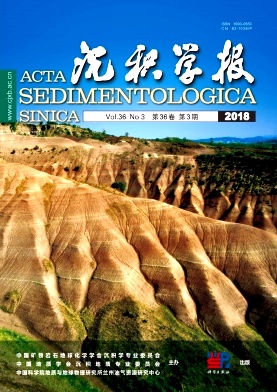Paleosols: Sensitive Indicators of Depositional Environments and Paleoclimate
doi: 10.14027/j.issn.1000-0550.2018.054
- Received Date: 2017-07-13
- Rev Recd Date: 2017-09-12
- Publish Date: 2018-06-10
-
Key words:
- paleosol /
- paleoclimate /
- depositional environment /
- alluvial stratigraphy /
- quantitative paleoclimate reconstruction
Abstract: Paleosols are sensitive to indicate depositional environments and paleoclimate changes. At the present days, the studies of paleoenvironment and paleoclimate based on paleosols become one of the hot scientific points in sedimentology. It is an effective and valuable approach by using paleosols to untangle major geological events during the evolution history of our planet. Many abroad studies on paleosols have dealt with almost all sedimentary records from the Archean to Quaternary Period. In contrast, some domestic work has been exclusively conducted on the paleosols of the Quaternary Period. However, few works have been done on the paleosols of the very long pre-Quaternary time in China. On the basis of a brief introduction of diagnostic features and burial alteration of paleosols, this paper analyzes the roles of paleosols in the depositional environment interpretation, and stratigraphic division and correlation. Afterwards, the emphases are put on estimation of soil-forming processes, pedo-types, and quantitative paleoclimate reconstruction (MAP, MAT, and pCO2) based on proxies including depth of Bk horizon, elemental geochemistry, pedogenic carbonate isotopes. In addition, the applicability of different empirical formula for paleoclimatic estimation is also summarized and discussed. In recent years, much progress has been made on the paleosols from the continental Cretaceous clastic rocks in the Songliao, Sichuan, and Jiaolai basins in China. Moreover, abundant paleosols are observed within the Cretaceous alluvial redbeds of Jiangxi, Guangdong, and Zhejiang provinces in SE China, and they were interpreted as paleosol sequences formed in the arid and oxidizing depositional environments. The goal of this synthesis is to attract attention from more domestic sedimentologists to involve in the research of paleosols preserved in the pre-Quaternary sedimentary strata to achieve more contribution for ancient environmental changes.
| Citation: | CHEN LiuQin, LIU Xin, LI PengCheng. Paleosols: Sensitive Indicators of Depositional Environments and Paleoclimate[J]. Acta Sedimentologica Sinica, 2018, 36(3): 510-520. doi: 10.14027/j.issn.1000-0550.2018.054 |






 DownLoad:
DownLoad: